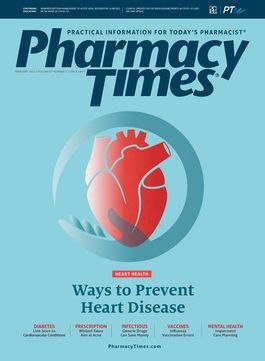Publication
Article
Pharmacy Times
Experts Discuss Best Practices for Managing VTE
Author(s):
Education and keeping up with the latest literature are 2 of the biggest challenges in treating venous thromboembolism.
Venous thromboembolism (VTE) can be a serious condition and there are multiple challenges to patient education. Recently, a group of experts in a Pharmacy Times® Practice Pearls video series discussed how to improve education efforts, treatments for hospitalized medical or nonsurgical patients, and VTE prevention.
VTE is characterized by the same symptoms as deep venous thrombosis with the addition of pulmonary embolus, said Paul Ament, PharmD, BS Pharm, a clinical pharmacy manager at Excela Health System.
Approximately 900,000 cases of VTE are reported each year, and symptoms can include cramping in the calf or thigh and unilateral leg swelling, he said.
Some patients may be asymptomatic, leading to the incidental discovery of VTE on a computerized axial tomography scan.
The condition is very common, with about 100,000 patients each year dying of VTE-related complications, Ament said.
The standard of care is shifting away from enoxaparin and warfarin and toward direct oral anticoagulants (DOACs), said Charles Mahan, PharmD, RPh, PhC, a cardiac critical care clinical pharmacist at Presbyterian Hospital in Albuquerque, New Mexico, who hosted the video series.
“It’s been really an amazing journey...We’ve transitioned from 5 to 7 days of hospitalization for bridging with heparin to warfarin to now being able to do this all out of the emergency room with a pill and send these patients home,” said Riley Bowers, PharmD, a clinical assistant professor of pharmacy practice at Campbell University College of Pharmacy & Health Sciences in Buies Creek, North Carolina.
When he trained as a pharmacist, the only options were unfractionated heparin and warfarin, Bowers said.
Education about and prevention of VTE are both extremely important, Mahan said, noting that 20% or more of cases can be linked to an instance where VTE could have been prevented.
VTE is known as one of the most preventable causes of death and hospitalization, he said.
Because VTE prophylaxis is a joint commission quality measure, Mahan said it provides a great opportunity for pharmacists to contribute at the health system level.
“With anywhere from 500,000 to 1 million VTE [cases] occurring each year, depending on the reference…prevention is [imperative], because once you get into that cycle of having a clot, the recurrence rate can be 30% to 50%,” he said.
When educating patients, pharmacists should focus on the many risk factors for VTE, because as many as 80% of patients with VTE will have had at least 1 major risk factor, Bowers said.
Hereditary risks include antithrombin deficiencies, factor V Leiden mutations, and protein central nervous system deficiencies, he said.
Although there are myriad acquired risk factors, some of the major ones include active malignancy; pregnancy; surgery, especially cardiac and general orthopedic; and history of previous VTE or stroke.
Notably, Bowers said that coronavirus disease 2019 (COVID-19) is a risk factor for VTE, although he noted that there is still a lot to learn about the disease and how it interacts with VTE.
Elevated dimerized plasmin fragment D is a common laboratory finding in patients with COVID-19, especially those with acute illness. Bowers remarked on the results of several case studies that have shown developments of pulmonary embolus in patients with COVID-19 and no other identifiable risk factors.
When the panelists turned to a discussion of guidelines around pharmaceutical prevention, Ament noted that the American College of Chest Physicians’ guidelines were last published in 2012, before there were FDA-approved DOACs for prophylaxis of VTE. However, the American Society of Hematology released guidelines with similar recommendations in 2018.
“At this point, they have not advocated using the direct oral anticoagulants,” Ament said.
“They more strongly recommend [using] unfractionated heparin or low molecular weight heparin in the acutely ill patients,” he said. “They do prefer low molecular weight heparin, probably because it is once daily dosing, instead of [every 8 or 12] hours.”
Low molecular weight heparin is also favored in patients who are critically ill or in the intensive care unit.
Despite strong data and 2 FDA-approved products, the guidelines do not advocate for continuing prophylaxis beyond hospital discharge, Ament said.
The 2 approved products for this use are betrixaban (Bevyxxa) and rivaroxaban.
“In practice, I don’t feel betrixaban ever really caught on,” Bowers said. “But if COVID-19 has done anything as far as the anticoagulation world, I do feel [as though] we’re now actually starting to see some extended prophylaxis, especially with rivaroxaban, in our high-risk patients.”
The panelists concluded that education and keeping up with the latest literature are some of the biggest challenges to managing VTE.
With no gold-standard risk assessment model, there is a clear need for additional guidance and research if risk assessment is to be implemented at institutional levels, Bowers said.
“I think if we can get better at assessing risk, managing risk, we will eventually get better at appropriately covering patients with the correct pharmacotherapy,” he said. “I think that’s where a lot of the challenges remain in managing VTE.”







